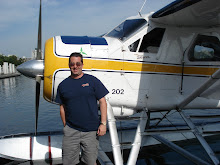
Artem Ivanovich Mikoyan was a Soviet aircraft designer of Armenian descent. In partnership with Mikhail Iosifovich Gurevich he designed many of the famous MiG military aircraft.Born in Sanahin, then in the Russian Armenia portion of the Russian Empire, now Lori, Armenia.[1] He completed his basic education and took a job as a machine-tool operator in Rostov, then worked in the "Dynamo" factory in Moscow before being conscripted into the military. After military service he joined the Zukovsky Air Force Academy, where he created his first plane, graduating in 1937. He worked with Polikarpov before being named head of a new aircraft design bureau in Moscow in December 1939. Together with Gurevich, Mikoyan formed the Mikoyan-Gurevich design bureau, producing a series of fighter aircraft. In March, 1942, the bureau was renamed OKB MiG (Osoboye Konstruktorskoye Büro), ANPK MiG (Aviatsionnyy nauchno-proizvodstvennyy kompleks) and OKO MiG. The MiG-1 proved to be a poor start, the MiG-3 was misused[clarification needed] and the MiG-5, MiG-7 and MiG-8 Utka were effectively research prototypes.Early post-war designs were based on domestic works as well as captured German jet fighters and information provided by Britain or the US. By 1946, Soviet designers were still having trouble in perfecting the German-designed, axial-flow jet engine, and new airframe designs and near-sonic wing designs were threatening to outstrip development of the jet engines needed to power them. Soviet aviation minister Mikhail Khrunichev and aircraft designer Alexander Sergeyevich Yakovlev suggested to Joseph Stalin that the USSR buy advanced jet engines from the British. Stalin is said to have replied: "What fool will sell us his secrets?" However, he gave his assent to the proposal, and Artem Mikoyan, engine designer Vladimir Klimov, and other officials traveled to the United Kingdom to request the engines. To Stalin's amazement, the British Labour government and its pro-Soviet Minister of Trade (Sir Stafford Cripps) were perfectly willing to provide technical information and even a licence to manufacture the Rolls-Royce Nene centrifugal-flow jet engine. This engine was reverse-engineered and produced in modified form as the Soviet Klimov VK-1 jet engine , later incorporated into the MiG-15 (Rolls-Royce later attempted to claim £207m in license fees, without success).
In the interim, on April 15 of 1947, Council of Ministers issued a decree #493-192, ordering the Mikoyan OKB to build two prototypes for a new jet fighter. As the decree called for first flights as soon as December of that same year, the designers at OKB-155 fell back on an earlier troublesome design, the MiG-9 of 1946. The MiG-9 suffered from an unreliable engine and control problems.
The I-270, a prototype based on German concepts, developed into the I-310 in the USSR and into F-86 Sabre in the States. With the Klimov version of the British Nene jet engine, this design became the MiG-15, which first flew on 31 December 1948. Despite its mixed origins this aircraft had excellent performance and formed the basis for a number of future fighters. The MiG-15 was originally intended to intercept American bombers like the B-29 Superfortress, and was even evaluated in mock air-to-air combat trials with interned ex-U.S. B-29 bombers as well as the later Soviet B-29 copy, the Tupolev Tu-4. A variety of MiG-15 variants were built, but the most common was the MiG-15UTI (NATO 'Midget') two-seat trainer. Over 18,000 MiG-15s were eventually manufactured.
From 1952 Mikoyan also designed missile systems to particularly suit his aircraft, such as the famous MiG-21. He continued to produce high performance fighters through the 1950s and 1960s.
He was twice awarded the highest civilian honour, the Hero of Socialist Labor and was a deputy in six Supreme Soviets. His elder brother Anastas Ivanovich Mikoyan was a senior Soviet politician.
After Mikoyan's death, the name of the design bureau was changed from Mikoyan-Gurevich to simply Mikoyan. However, the designator remained MiG.
He was buried in the Novodevichy Cemetery in Moscow
